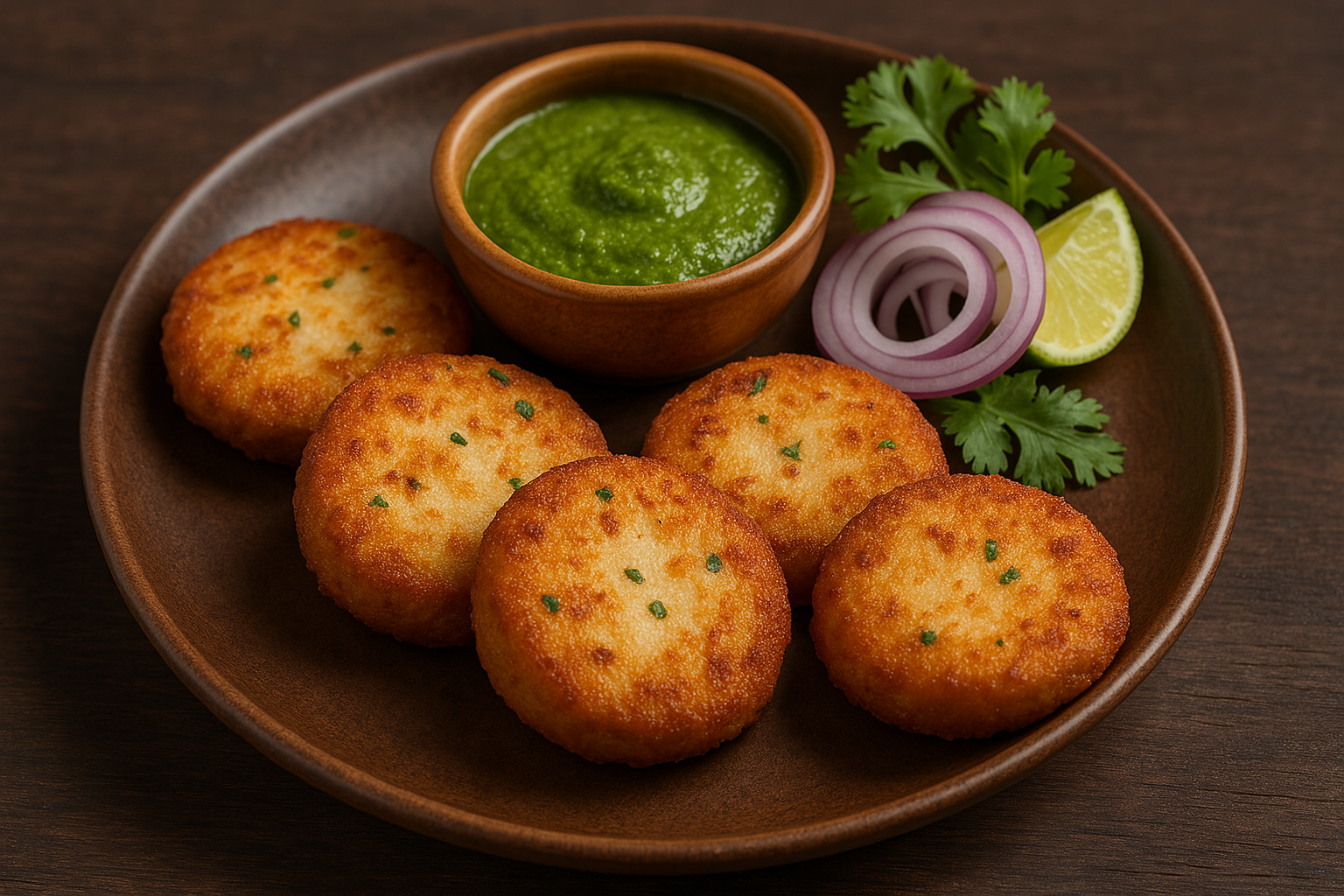
Introduction
Among the most graceful delicacies to emerge from the royal kitchens of India, Dahi Ke Kebab is a dish that whispers sophistication and melts with elegance. This Mughlai-inspired vegetarian starter, often underrated, brings together the luxurious texture of hung curd and the crunch of golden-brown crust into a symphony of taste.
Origin and Significance
Rooted in the kitchens of Awadhi Nawabs, Dahi Ke Kebab was a royal invention designed to cater to vegetarian nobles who desired the richness of kebabs without meat. The technique of straining curd to achieve a cheese-like consistency, binding it gently with spices, and shallow frying to achieve a golden crust is nothing short of culinary engineering.
Today, this dish has found its place in gourmet restaurants, wedding buffets, and now in your kitchen. Its subtle taste, creamy bite, and health appeal have made it a vegetarian gem for discerning palates.
Storytelling by Madhu Savara
It was 2002, in the hills of Mussoorie, when I first tasted an unforgettable Dahi Ke Kebab at a royal banquet hosted by a descendant of the erstwhile Awadhi family. I asked for the recipe, but the chef only smiled and said, “It takes patience, not just ingredients, to make these kebabs royal.”
Years later, I recreated that same magic in my kitchen, this time with modern technique and precision. The result is what you hold here — a recipe perfected over time and plated with passion. This is not just a kebab, it is tradition reborn.
Servings
Preparation Time:
Cooking Time:
Calories
Ingredients
(Standardised Measurements)
- 2 cups Hung Curd (drained overnight)
- 4 tbsp Roasted Gram Flour (besan)
- 1 medium Onion, finely chopped
- 2 Green Chillies, finely chopped
- 2 tbsp Fresh Coriander, finely chopped
- 1 tsp Ginger paste
- 1 tsp Cumin powder
- 1 tsp White Pepper Powder
- ½ tsp Chaat Masala
- ½ tsp Garam Masala
- Salt to taste
- Ghee or oil for shallow frying
Equipment Needed
- Muslin cloth or fine strainer
- Mixing bowl
- Flat-bottom pan/skillet
- Wooden spatula
- Plate and paper towels
Nutrition Information
- Calories: 160 kcal
- Protein: 6g
- Carbohydrates: 8g
- Fat: 10g
Step by Step Instructions
- Prepare Hung Curd:
- Take fresh curd and tie it in a muslin cloth. Hang overnight or place in a strainer with a weight for 8–10 hours to remove all whey.
- Make the Mixture:
- In a mixing bowl, combine hung curd, besan, onion, green chillies, coriander, and all spices. Mix gently.
- Ensure the mixture is thick enough to form patties. If too wet, add a spoonful of besan.
- Shape the Kebabs:
- Grease your palms and form round, flat kebabs. Place them on a tray and refrigerate for 15–20 minutes to set.
- Cook the Kebabs:
- Heat ghee/oil in a flat pan on medium heat.
- Shallow fry the kebabs till golden brown on both sides, about 3–4 minutes each side.
- Handle gently while flipping to retain shape.
Tips and Variations
- Add a little grated paneer for extra richness.
- For a smoky flavour, do dhungar with coal before shaping.
- You can coat in semolina (sooji) for extra crunch
Allergen Information
- Contains dairy (curd)
- Gluten-free (if using pure besan and no coatings)
Serving Suggestions
- Serve hot with mint chutney and pickled onions.
- Pair with saffron lassi or masala chai as a high tea delicacy.
Storage Instructions
- Uncooked kebabs can be refrigerated for up to 24 hours.
- Cooked kebabs stay fresh for 2 days in the fridge. Reheat on a tawa, not in the microwave.
Conclusion
In the gentle crust and velvety core of this Dahi Ke Kebab, you will find the true essence of royal Indian vegetarian cuisine. Inspired by Mughlai roots and perfected by Chef Madhu Savara, this dish combines history, taste, and technique like few others can. Every bite speaks of heritage and health, making it not just a dish but an experience.
With every creamy mouthful, you’ll taste why dahi ke kebab, Madhu Savara’s kebab, and vegetarian Mughlai recipes are ruling search engines and gourmet tables alike.
Call to Action
Try this delicious Dahi Ke Kebab at home and let us know your feedback in the comments below! Don’t forget to share with your friends.
👉 Follow us on Facebook: facebook.com/madhusavaraskitchen
Comments Section
Tell us how your kebabs turned out. Did you add a twist? Share it with our food community!
Important Notice: Read Before Proceeding
The recipes, preparation methods, nutritional details, and related content published on Madhu Savara’s website, social media, and associated platforms are intended solely for general informational and educational purposes. While every effort has been made to ensure accuracy and reliability, we make no guarantees regarding the results, safety, or accuracy of any recipe presented here.
We are not licensed nutritionists, dieticians, or medical professionals. The nutritional values provided are estimates only, calculated using third-party tools, and should not be used for medical diagnosis, dietary treatment, or allergy management. If you have any medical conditions, dietary restrictions, or food allergies, please consult your doctor or certified dietitian before attempting any recipe.
Cooking inherently involves sharp tools, high heat, and the risk of injury or fire. You assume full responsibility for your kitchen practices. Madhu Savara, the website, and all contributors shall not be held liable for any damage, injury, loss, or adverse outcome resulting directly or indirectly from the preparation, consumption, or interpretation of any content herein.
By using this website and attempting any recipe, you agree to hold harmless and indemnify Madhu Savara and her team from any liability, legal claim, or damages arising from the use of this content. You are encouraged to exercise independent judgment and take full responsibility for your health, kitchen safety, and actions.

